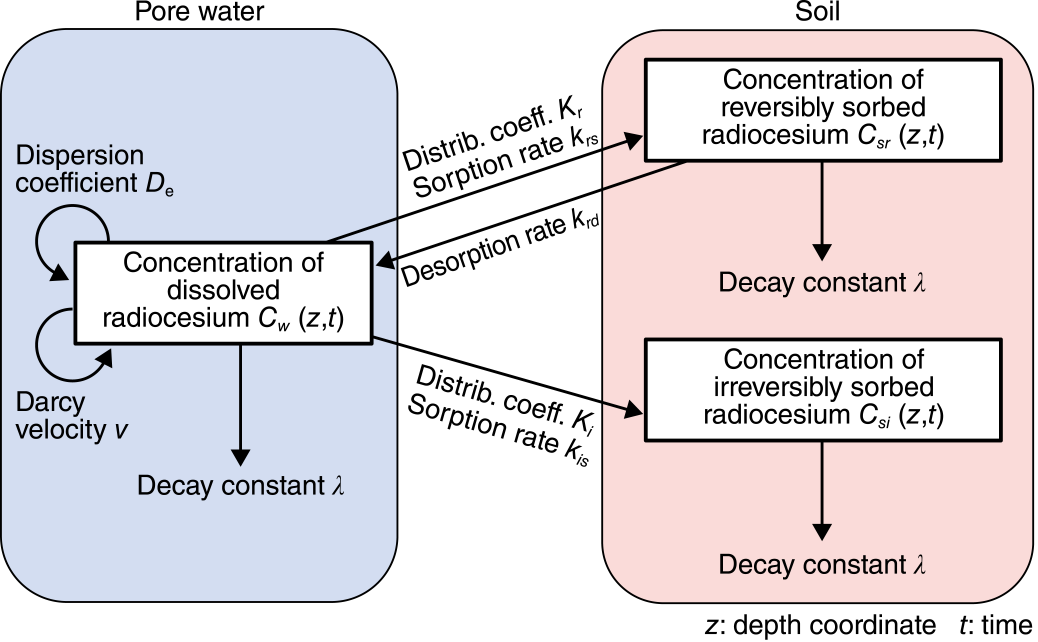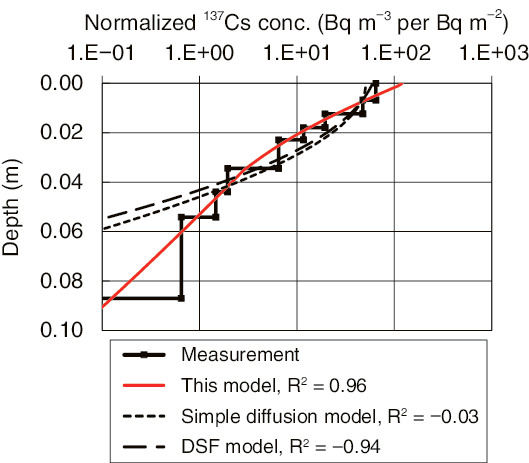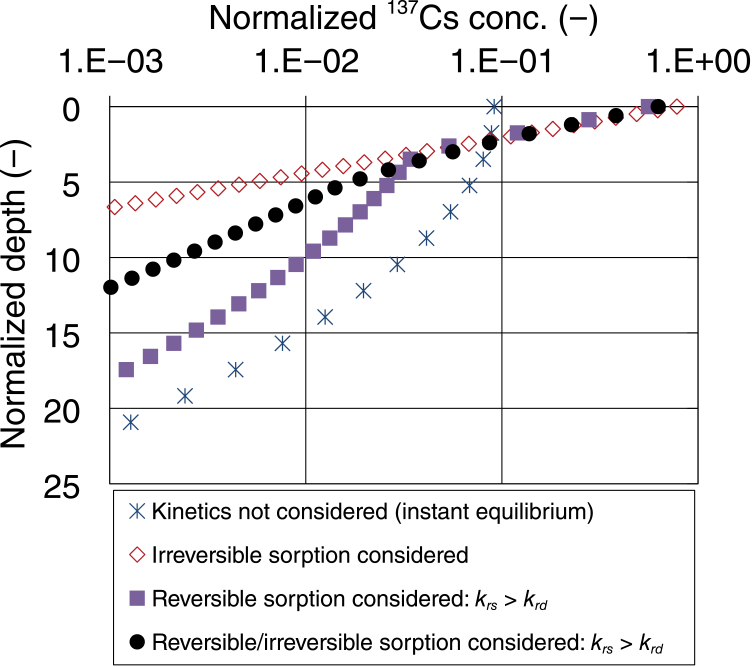
Fig.1-30 Schematic of the developed model

Fig.1-31 Comparison between the model results and the measurements

Fig.1-32 Results of the parameter-exploration analysis
Despite radiocesium’s affinity for binding to soil, it gradually migrates deeper into the ground over time. This results in a faster rate of reduction of air-dose rates than would otherwise be expected by radioactive decay. The depth profile and fixation of radiocesium in soil affects its uptake by vegetation and its redistribution by soil erosion and sediment transport. Therefore, it is important to understand the physicochemical processes that alter radiocesium-depth distributions in soil.
The profiles of radiocesium activity measured with depth in the soil often show exponential shapes with long-tails at large depth. However, previous models, such as the simple diffusion model, have been unable to express such profiles. Based on investigations of radiocesium adsorbed by soil minerals, desorption experiments, and field monitoring, we assumed such vertical distributions were affected by sorption kinetics at reversible and irreversible sites. Therefore, we developed an advection-dispersion equation with fully kinetic reversible/irreversible sorption terms (Fig.1-30).
We compared the model results against the measured depth profile in Fukushima Prefecture (Fig.1-31). The previous models such as the simple diffusion model and the DSF model were unable to express the exponential shapes with long-tails, while our model agreed well with the measured profile.
Then, we conducted a set of analyses to examine the effect of reversible/irreversible sorption kinetics upon the depth distributions (Fig.1-32). The results revealed that the sorption kinetics give rise to the initial exponential shape and that different rates of kinetic sorption and desorption cause the long tail in the depth distribution. We will predict how dose-rate evolution is affected by the migration of radiocesium into soils as the next step of our research.